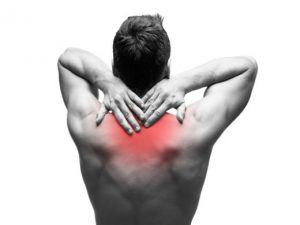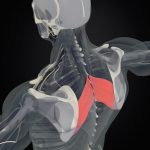 Everyone experiences muscle pain from time to time, and the majority of cases are due to simple causes that can be easily remedied. However, there exist other more sinister forms of muscle pain that may be perceived as benign but are be due to an underlying medical condition.
Everyone experiences muscle pain from time to time, and the majority of cases are due to simple causes that can be easily remedied. However, there exist other more sinister forms of muscle pain that may be perceived as benign but are be due to an underlying medical condition.
To help our readers make more informed conclusions and know whether to see a doctor concerning their symptoms, we have compiled a list of our best articles discussing various forms of muscle pain. You will learn about trapezius, rhomboid, and deltoid muscle pain, as well as the signs and symptoms of myalgia and myositis. To give you more options to find a treatment method to suit your own personal needs, we’ve included an article on essential oils for muscle pain.
How to treat trapezius muscle pain: Causes, symptoms, diagnosis, and exercises
Advertisement
Trapezius muscle pain is often described as acute or chronic pain that affects a number of small muscles in the upper back and neck. The pain in this area typically begins and remains in the trapezius area.
Trapezius strains causing pain are thought to be due to repetitive strain or stress injuries, similar to what occurs when carrying light loads or having certain unnatural postures like being hunched over a computer keyboard for long hours. It is believed that trapezius muscle pain trigger points are the main cause of neck and upper back pain. Acute forms of injury like whiplash may also lead to trapezius muscle pain. Continue reading…
 Rhomboid muscle pain: Causes, symptoms, and diagnosis
Rhomboid muscle pain: Causes, symptoms, and diagnosis
Rhomboid strain occurs in a group of muscles that are located in the upper back, just beneath the neck and the upper shoulder blades. The muscles are involved in controlling the arms and shoulders, so they are used very often throughout the day. The rhomboid muscles are very thin and are shaped like a triangle. They’re connected to the spine and the medial edges of the shoulder blades, making them important for maintaining good posture.
Excessive use of your arms and shoulders can easily lead to rhomboid pain. Playing sports like golf or tennis can overstretch the rhomboid muscles, causing them to feel pain and soreness. Carrying heavy loads on your upper back, as well as short bursts of abnormal movement, can elicitrhomboid muscle pain. Continue reading…
 Deltoid muscle pain: Symptoms, causes, and pain relief tips
Deltoid muscle pain: Symptoms, causes, and pain relief tips
Deltoid muscle pain can cause unpleasant shoulder and upper arm pain that makes movement difficult. Deltoid muscle pain can be mild or severe, but either way, sufferers are usually anxious to find relief so they can return to normal activity.
The deltoid muscle is the muscle that covers the tip of the shoulder. It is made up of three parts: the anterior, middle, and posterior. The deltoid connects the shoulder, the shoulder blade, and collarbone to the upper arm. The deltoid muscle has an important function. It rotates arms, enabling us to carry objects and move them from one spot to another. This muscle also prevents thehumerus bone, which is the long bone in the upper arm, from dislocating or getting injured when we carry heavy objects. Continue reading…
 20 essential oils for muscle pain and how to use them
20 essential oils for muscle pain and how to use them
Getting muscle aches and pains is a fact of life. The more we use our muscles, the more tired and fatigued they get, and unfortunately as we age this occurs more frequently and recovery takes longer. Aging also poses other problems for movement, as arthritis symptoms are more likely to develop.
Advertisement
These may include swelling, stiffness, and joint pain. Living with these symptoms may prevent you from doing the things you enjoy like exercising or simply working in your garden. Continue reading…
 Myalgia and myositis: Know about muscle pain and inflammation
Myalgia and myositis: Know about muscle pain and inflammation
Myalgia and myositis both cause discomfort in the muscle, but they are very different conditions in the sense that one creates muscle pain and the other inflammation.
Myalgia means muscle pain or aching. An example of a myalgia would be the ailment fibromyalgia. The word fibro derives from the New Latin, “Fibro” – meaning “fibrous tissue” while myalgia implies pain. People who suffer from fibromyalgia experience chronic widespread muscle and joint pain. Continue reading…
[adstoappear]